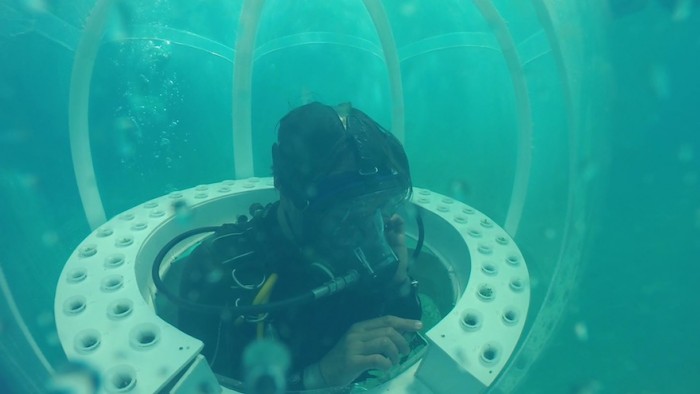From the Series
Scuba-diving company owner Sergio Gamberini and his son Luca have developed a method growing fresh produce under the water in the sea off the coast of Northern Italy.
Their research began three years ago, and now after much research and development they have turned what was an idealist dream into a quite a striking and potentially groundbreaking reality. Their underwater biospheres, which they have humourously called Nemo’s Garden, are low-cost and low-energy and could be part of a solution to feed a growing population using areas that were previously inconceivable arable.
Biospheres, like giant bubbles, are sunk below the water and filled with air. Plenty of sunlight filters through the water, providing UV for photosynthesis. Evapourating seawater condenses on the inner walls of the biosphere and produces high-humidity within the bubble – a genuine plant paradise.
This underwater garden may in fact have solved some of the difficulties farmers face on dry land: an abundance of light and humidity, a stable temperature (along this pilot coastline the sea holds a constant temperature of around 25 degrees), and the plants are safe from pests and parasites.
The biospheres are attracting some other curious sea life: octopuses have been noted taking shelter under the spheres and endangered seahorses have gathered to develop their nurseries. Crabs have even crawled up and into the spheres, but none of these aquatic creatures have yet to pose a threat to the plants. What’s more, the Gamberini’s have found that their plants seem to be growing faster than they would on land.
This year’s crops were planted at the end of June 2015. Live streaming of the underwater project is available and each week an analysis of how the plants are faring will be broadcast. The Gamberinis have also created miniature biosphere’s for people to try out in their homes, and are asking that participants share their experiences and add to the research.
The search for space to grow in the future has gone underground, up into skyscrapers and now it goes below the waves. The Nemo’s Garden project could be the answer for many temperate coastal regions, whose land is too dry or rock to farm. The biosphere system is sustainable, affordable and uses only natural methods.











